Flight Comfortable

What should I include in my carry-on luggage for a long-haul flight ?
When packing your carry-on luggage for a long-haul flight, it's important to consider the items that will make your journey more comfortable and enjoyable. Here are some essential items to include: ### 1\. Personal Items - **Passport and travel documents**: Make sure to bring your passport, visa (if required), boarding pass, and any other necessary travel documents. - **Wallet and money**: Bring your wallet with cash, credit cards, and any currency you may need for your destination. - **Phone and charger**: Don't forget your phone and its charger, as well as any necessary adapters or converters for international use. - **Medication and health products**: If you have any medication or health products that you need during the flight, make sure to pack them in your carry-on luggage. - **Personal hygiene items**: Pack a small toiletry bag with items such as toothbrush, toothpaste, deodorant, hand sanitizer, and moisturizer. ### 2\. Comfort Items - **Snacks and drinks**: Bring some snacks and water to keep yourself hydrated and satisfied during the flight. - **Entertainment**: Pack a book, magazine, or e-reader to keep yourself entertained during the flight. You can also download movies or TV shows onto your device beforehand. - **Headphones or earbuds**: Bring headphones or earbuds to listen to music, watch movies, or block out noise during the flight. - **Travel pillow and blanket**: A travel pillow and blanket can help you get comfortable and restful during the flight. - **Eye mask and earplugs**: An eye mask and earplugs can help you block out light and noise, allowing you to sleep more easily during the flight. ### 3\. Clothing and Accessories - **Comfortable clothing**: Wear comfortable clothing on the flight, such as stretchy pants or leggings, a loose-fitting shirt, and comfortable shoes. - **Sweater or jacket**: Bring a sweater or jacket to keep yourself warm during the flight, especially if you tend to get cold easily. - **Socks and slippers**: Pack a pair of socks and slippers to keep your feet warm and comfortable during the flight. - **Sunglasses and hat**: Bring sunglasses and a hat to protect yourself from the sun when you arrive at your destination. ### 4\. Miscellaneous Items - **Reusable water bottle**: Bring an empty reusable water bottle to fill up after passing through security, rather than buying bottled water at the airport. - **Pen and paper**: Bring a pen and paper to jot down notes or ideas during the flight. - **Travel journal**: If you enjoy writing, consider bringing a travel journal to document your experiences during the trip. - **Small backpack or purse**: Use a small backpack or purse to store all of your carry-on items, making it easy to access them during the flight.

Can I still get a tax refund if I have a connecting flight within the EU ?
To obtain a tax refund when you have a connecting flight within the EU, follow these steps: purchase goods in a participating store, complete the tax-free shopping form, obtain a customs stamp, and claim your tax refund. Having a connecting flight does not affect your ability to get a tax refund.

How can I make the most of a long layover at the airport ?
How to Make the Most of a Long Layover at the Airport Having a long layover at the airport can be both a blessing and a curse. On one hand, it gives you more time to relax and explore the airport amenities. On the other hand, it can also be boring and frustrating if you don't know how to make the most of your time. Here are some tips on how to make the most of a long layover at the airport: 1. **Explore the Airport** * Visit the Duty-Free Shops: Duty-free shops offer a wide range of products, from cosmetics and perfumes to electronics and souvenirs, often at discounted prices. Take advantage of this opportunity to do some shopping or pick up a gift for someone special. * Check Out the Food Courts: Airport food courts offer a variety of dining options, from fast food to sit-down restaurants. Use this time to try out new dishes or enjoy your favorite meal before your next flight. * Visit the Art Galleries and Exhibits: Many airports feature art galleries and exhibits showcasing local artists and culture. Take a stroll through these areas to learn more about the destination you're visiting or passing through. 2. **Relax and Recharge** * Find a Quiet Spot to Read or Work: Look for quiet areas in the airport where you can settle down with a good book or catch up on work without distractions. Many airports have designated quiet zones or business centers equipped with comfortable seating and charging stations. * Get a Massage or Spa Treatment: Some airports offer massage chairs, spa treatments, and even yoga classes to help travelers relax and rejuvenate during their layover. Check out the airport's website or ask staff for information on available services. * Take a Nap in a Lounge or Sleep Pod: If you need to rest, consider paying for access to an airport lounge that offers comfortable seating, snacks, and beverages. Alternatively, some airports have sleep pods where you can rent a private space to take a nap for a few hours. 3. **Stay Connected** * Use Free Wi-Fi: Most airports offer free Wi-Fi service, allowing you to stay connected with friends, family, and work while waiting for your next flight. Look for signs indicating the network name and password, or ask airport staff for assistance. * Charge Your Devices: Make sure your devices are fully charged before boarding your next flight by using the available charging stations throughout the airport. Some airports also offer portable chargers for rent or purchase if you need extra power. 4. **Stay Entertained** * Watch Movies or TV Shows: Many airports have screens displaying movies, TV shows, and live sports events. Find a comfortable spot near one of these screens and enjoy the entertainment while waiting for your flight. * Download Entertainment Apps: Download apps like Netflix, Hulu, or Amazon Prime Video before your trip so you can stream movies, TV shows, and music offline during your layover. This way, you won't have to worry about using data or finding Wi-Fi connections.

What are the challenges faced by air travel industry due to changing climate patterns ?
The air travel industry is facing numerous challenges due to changing climate patterns, including extreme weather events, altered flight paths, airport infrastructure damage, health risks, and environmental concerns. These challenges can impact flight schedules, increase maintenance costs, and require changes to air traffic control systems. To adapt, airlines must invest in innovative solutions that prioritize sustainability and resilience.

How early should I arrive at the airport before my flight ?
When it comes to arriving at the airport before your flight, there are several factors to consider. Here are some general guidelines to help you plan your trip: - For domestic flights within the United States or other countries, it is generally recommended to arrive at the airport at least 2 hours before a non-peak hour flight and 3 hours before a peak hour (morning and evening rush hours) flight. - For international flights departing from the United States or other countries, it is generally recommended to arrive at the airport at least 3 hours before a non-peak hour flight and 4 hours before a peak hour (morning and evening rush hours) flight. - If you have any special circumstances such as checking bags, traveling with children or elderly persons, or needing extra time for security screenings, customs, and immigration procedures, you may want to allow for more time. - Additional factors that can impact how early you should arrive at the airport include airport size and location, time of day, transportation method, security measures, and special circumstances. Overall, it is always better to arrive at the airport earlier rather than later to avoid any last-minute stress or missed flights. Plan ahead and give yourself plenty of time to navigate through the airport processes smoothly.

How can I create a sleep-friendly environment in my bedroom ?
To create a sleep-friendly environment in your bedroom, control the lighting, maintain a comfortable temperature, reduce noise levels, invest in a comfortable mattress and pillows, limit electronic devices, and establish a bedtime routine.

What are some tips for finding cheap flights and accommodations ?
Finding cheap flights and accommodations can be a daunting task, but with the right strategies, you can save money and still have a great travel experience. Here are some tips to help you find affordable options: ## 1\. Be Flexible with Your Travel Dates One of the best ways to find cheap flights and accommodations is to be flexible with your travel dates. Prices often fluctuate depending on the time of year, day of the week, and even the time of day. If possible, try to travel during off-peak seasons or midweek when prices tend to be lower. ## 2\. Book in Advance or Last Minute Booking your flight and accommodation well in advance can often result in significant savings. However, if your schedule allows it, booking last minute can also lead to great deals as airlines and hotels look to fill empty seats and rooms. ## 3\. Use Flight Aggregator Websites Flight aggregator websites like Skyscanner, Kayak, and Google Flights allow you to compare prices across multiple airlines and find the best deals. These sites often have features that enable you to set price alerts or search for flights from nearby airports, which can sometimes be cheaper. ## 4\. Consider Alternative Airports Flying into an alternative airport near your destination can sometimes result in lower airfare. For example, flying into Newark instead of JFK in New York City might save you money on your flight. ## 5\. Sign Up for Newsletters and Loyalty Programs Signing up for newsletters and loyalty programs from airlines and hotels can provide you with exclusive discounts and promotions. These offers can help you save money on future bookings. ## 6\. Use Credit Card Rewards If you have a credit card that offers travel rewards, consider using those rewards to pay for your flights or accommodations. This can significantly reduce the cost of your trip without having to spend additional money out of pocket. ## 7\. Look for Package Deals Sometimes booking a flight and hotel together as a package deal can be cheaper than booking them separately. Travel agencies and online booking platforms often offer package deals that include both elements of your trip at a discounted rate. ## 8\. Avoid Peak Travel Seasons Traveling during peak seasons like summer or holidays can be more expensive due to high demand. If possible, try to plan your trip during off-peak seasons when prices are generally lower. ## 9\. Use Budget Airlines and Accommodations Budget airlines and accommodations can offer significant savings compared to their full-service counterparts. While they may not provide all the amenities of more expensive options, they can be a great way to save money on your trip. ## 10\. Negotiate with Hotels Directly Calling hotels directly and asking about any available discounts or promotions can sometimes result in better rates than booking online. It's always worth asking if there are any unadvertised deals available.

What are the most common mistakes travelers make at the airport ?
Traveling through airports can be stressful, but avoiding these common mistakes can make the experience smoother and more enjoyable. Here are some of the most common mistakes travelers make at the airport: 1. Not checking in online before arriving at the airport, which can lead to long wait times and potentially missing your flight. 2. Arriving late to the airport, which can cause stress and anxiety as you rush to get through security and find your gate. 3. Overpacking in your carry-on luggage, which can make it harder to navigate through the airport and result in having to pay extra fees if your bag exceeds weight or size restrictions. 4. Not being prepared for security checks, which can slow you down and cause delays. 5. Not knowing where your gate is located before heading to the airport, which can cause confusion and potentially missing your flight. 6. Not charging electronics before heading to the airport, which can leave you without access to important devices during your flight or while waiting at the airport.

How do I find cheap flights without sacrificing comfort ?
Finding cheap flights without sacrificing comfort is a challenge, but it's not impossible. Here are some tips to help you find the best deals on comfortable flights: Being flexible with your travel dates can make a significant difference in the price of your flight. Try to avoid peak travel times like holidays and weekends, as these tend to be the most expensive times to fly. Instead, aim to travel during off-peak times, such as midweek or early morning/late evening flights. Booking early can often get you the best deals, as airlines tend to increase prices closer to the departure date. However, if you're willing to take a risk, booking last minute can also yield some great savings. Just be prepared to compromise on your preferred flight time and seating arrangements. Flight aggregator websites like Skyscanner and Kayak allow you to compare prices across multiple airlines and find the cheapest options. These sites often have filters that allow you to prioritize factors like layover time, cabin class, and airline ratings, so you can find flights that meet your comfort requirements. Many airlines offer newsletters and loyalty programs that provide exclusive discounts and deals to subscribers. By signing up for these, you can stay informed about upcoming sales and promotions that may not be advertised elsewhere. If you live near multiple airports, consider flying out of an alternative airport instead of the main one. These smaller airports often have cheaper flights due to lower demand and fewer flight options. Just be sure to factor in the cost of transportation to and from the airport when comparing prices. Hidden city ticketing involves booking a flight with a layover at your desired destination instead of the final destination listed on the ticket. This can sometimes result in significant savings, but it's important to note that it's against most airline policies and can result in complications if discovered. If you're willing to pay a bit more for extra legroom and comfort, consider choosing economy plus seats. These seats are typically located near the front of the economy section and offer more space than standard economy seats. They're often available for a reasonable fee, especially if booked in advance. Packing light can save you money on baggage fees and make your trip more comfortable overall. Most airlines allow passengers to bring one carry-on bag and one personal item for free, so take advantage of this by packing only the essentials and avoiding overweight baggage charges.
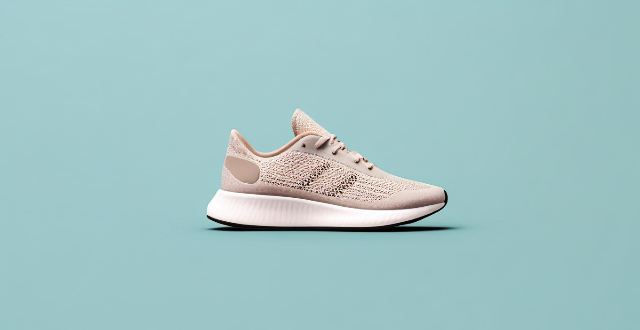
Can you recommend some stylish and comfortable running shoes ?
The text provides a topic summary for recommendations on stylish and comfortable running shoes. It lists five models: Nike Zoom Pegasus 36, Adidas Ultraboost 19, Brooks Ghost 12, Mizuno Wave Rider 22, and Hoka One One Clifton 7. Each model is described in terms of its design and comfort features. The Nike shoe has a modern design with responsive cushioning; the Adidas model offers a trendy look and soft ride; the Brooks shoe has an understated style with excellent cushioning; the Mizuno shoe has a unique wave plate design with balanced cushioning and support; and the Hoka One One shoe boasts minimalist design with maximal cushioning. Overall, these recommended running shoes cater to runners who prioritize both style and comfort.
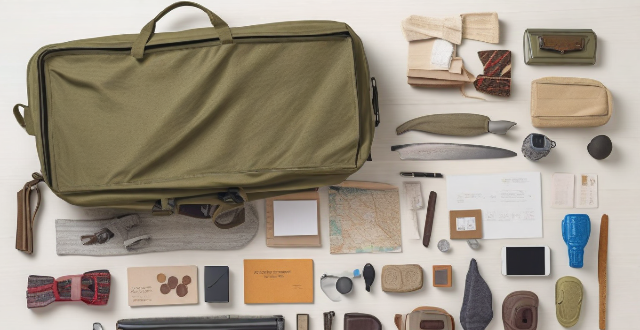
What should I pack in my carry-on luggage for a smooth airport experience ?
When packing your carry-on luggage, consider what you will need during the flight and at your destination. Pack documents and travel information, comfortable clothing and accessories, toiletries and personal care items, entertainment and electronics, snacks and water, cash and credit cards, a travel pillow, an eye mask and earplugs, a pen and paper, and a reusable shopping bag for souvenirs or dirty laundry. Check the airline's carry-on baggage policies before you travel to avoid any issues at the airport.

What should I pack for a photography trip to a tropical destination ?
When planning a photography trip to a tropical destination, it's essential to pack the right gear and clothing to ensure you capture stunning images while staying comfortable and protected from the elements. Here are some items you should consider packing: Camera Gear: Primary camera body, backup camera body, variety of lenses, sturdy tripod, filters, high-capacity memory cards, extra batteries and charger, cleaning kit. Clothing and Accessories: Lightweight clothing made from natural fabrics like cotton or linen, waterproof jacket or raincoat, hat and sunglasses, sunscreen, insect repellent, comfortable shoes suitable for walking on uneven terrain or hiking trails, swimwear if you plan to swim or snorkel. Miscellaneous Items: Comfortable backpack or camera bag with enough space to carry all your gear and personal belongings, reusable water bottle filled with clean drinking water, snacks like energy bars, nuts or fruits to keep your energy levels up during long shoots or hikes, small first aid kit with essential items like bandages, antiseptic wipes, pain relievers and any prescription medications you may need, guidebooks or maps of the area you'll be exploring to help you navigate and find interesting locations to photograph.

What is the ideal backpack for a city break ?
When planning a city break, it's important to choose the right backpack that can accommodate all your essentials while being comfortable and stylish. Key features of an ideal backpack for a city break include compact size with sufficient capacity, padded straps and back support for comfort, multiple compartments for organization, water-resistant material and sturdy zippers for durability, and stylish design with customizable features for personalization. Recommended backpacks for a city break include Herschel Classic Backpack, Osprey Nebula Laptop Backpack, JanSport SuperBreak Backpack, and The North Face Borealis Backpack. By selecting a backpack that meets these criteria, you can ensure a comfortable and enjoyable experience while exploring new cities.

How can I maintain a professional appearance while staying comfortable throughout the day ?
Maintaining a professional appearance while staying comfortable throughout the day is crucial in the workplace. Here are some tips: 1. Dress appropriately by choosing well-fitted clothes that are appropriate for your job and industry, avoiding overly casual or revealing clothing, and sticking to neutral colors like black, gray, navy, or beige. Pay attention to grooming by keeping your hair neat and tidy, making sure your facial hair is well-groomed if you choose to wear it, and applying deodorant and keeping your breath fresh with mints or gum. 2. Invest in quality footwear by wearing comfortable shoes that are supportive, such as loafers or low heels, avoiding high heels or shoes that pinch your toes, and breaking in new shoes gradually by wearing them around the house before wearing them to work. Take care of your feet by wearing socks or stockings that wick away moisture and prevent blisters, using shoe inserts or insoles for extra cushioning and support, and giving your feet a break by taking off your shoes during lunch breaks or when you're at your desk. 3. Stay hydrated and nourished by drinking plenty of water and bringing a water bottle to work to refill it throughout the day, avoiding sugary drinks and caffeine which can dehydrate you. Snack smartly by packing healthy snacks like fruits, nuts, or granola bars to avoid midday cravings for unhealthy foods, and eating small meals throughout the day instead of three large ones to maintain energy levels. 4. Take breaks and stretch by getting up from your desk every hour or so and taking a short walk or stretch, using your lunch break to go for a walk outside or do some light exercise. Practice good posture by sitting up straight with your feet flat on the floor and your shoulders relaxed, using a chair with good back support and adjusting the height if necessary, and taking breaks from staring at a computer screen by looking away for a few seconds every 20 minutes.

What is the optimal environment for studying effectively at home ?
The provided text offers a comprehensive guide on creating an optimal study environment at home. It emphasizes the importance of choosing a quiet area with comfortable seating and adequate lighting. The text suggests keeping the study area clean, clutter-free, and properly organized with essential materials within reach. It also recommends minimizing distractions by controlling electronics, using do not disturb signs, and scheduling short breaks. Personalizing the space with motivational decor, personal touches, and maintaining a comfortable temperature is also advised. Overall, the text aims to help readers create a conducive study environment that enhances focus and productivity.

What should I pack for an adventure travel activity ?
Adventure travel activities can be thrilling and exciting, but it's important to pack the right gear to ensure your safety and comfort. Here are some essential items to consider packing for your next adventure: - Clothing: A waterproof jacket with a high waterproof rating and breathability is essential for outdoor activities in wet conditions. Quick-dry shirts and pants that are comfortable to move in and suitable for the climate you'll be traveling in are ideal. Comfortable shoes or boots that provide support, traction, and comfort are also important. Pack warm layers like a fleece jacket or sweater for cooler temperatures. - Gear: Choose a backpack that's comfortable to wear and has enough space for all your gear. A headlamp or flashlight is essential for navigating in the dark or during power outages. Pack extra batteries or a charger to ensure you have enough light throughout your trip. A well-stocked first aid kit with bandages, antiseptic wipes, pain relievers, and any prescription medications you may need is important. A multi-tool can come in handy for various tasks. - Other Essentials: A reusable water bottle and a water filter or purification tablets are crucial for staying hydrated. High-energy snacks and food that are easy to carry and won't spoil quickly are great options for fueling up during your adventure. Reliable navigation tools like a map, compass, or GPS device are essential for finding your way in unfamiliar terrain. By packing these essential items, you'll be prepared for whatever challenges come your way during your adventure travel activity. Remember to also check the weather forecast and any specific requirements for your destination to ensure you have everything you need for a safe and enjoyable trip.
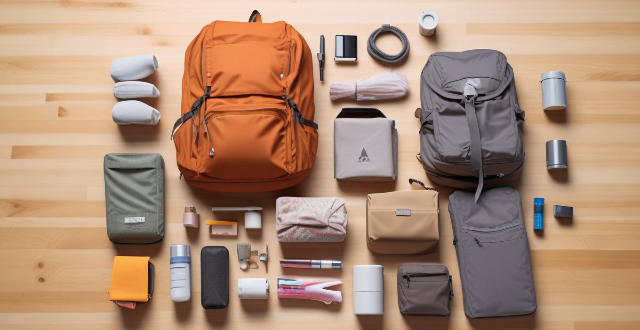
What are the must-have travel packing accessories for a comfortable trip ?
When planning for a trip, packing the right accessories is crucial to ensure comfort and convenience. Essential items include packing cubes, travel pillows, earplugs, portable chargers, water bottles, sunscreen, rain gear, versatile clothing, first aid kits, and compression bags. Each item serves a specific purpose, such as organization, neck support, noise reduction, device charging, hydration, sun protection, rain preparedness, space-saving in luggage, health care, and efficient use of suitcase space. Selecting these accessories based on individual trip needs can greatly enhance the traveling experience.

Can you suggest any essential items I should always pack for a vacation ?
When planning a vacation, it's important to pack the essential items that will ensure your comfort and safety throughout the trip. These include travel documents, clothing, toiletries, electronics and accessories, and miscellaneous items such as a travel pillow, reusable water bottle, snacks, reading material, cash and credit cards, and a travel journal. By packing these essentials in your carry-on luggage, you can ensure a comfortable and enjoyable vacation experience.
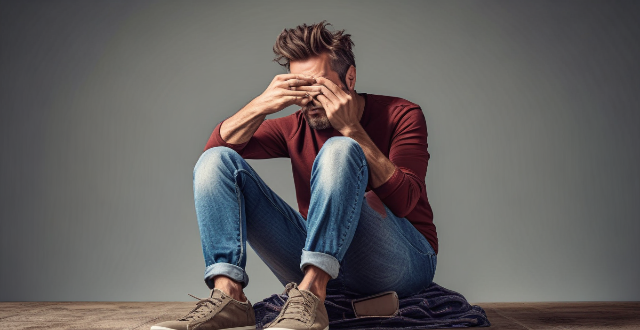
What role does stress play in sleep disturbances and how can it be managed ?
Stress can significantly impact sleep quality by causing difficulty falling asleep, frequent awakenings, light sleep, and early morning awakenings. Managing stress through relaxation techniques, regular exercise, healthy eating habits, a consistent bedtime routine, a comfortable sleep environment, limited screen time, and seeking professional help when needed can improve sleep quality and overall well-being.

What are some tips for traveling with toddlers ?
Traveling with toddlers can be a rewarding experience if you prepare well. Pack essential and convenience items, plan ahead for flights and accommodations, stay flexible during the trip, and prioritize safety measures. By following these tips, you can make your journey more enjoyable for both you and your little one.

How can we deal with jet lag during an international family trip ?
Jet lag, also known as desynchronosis or flight fatigue, is a physiological condition which can cause various issues such as insomnia, irritability, and difficulty concentrating. It occurs when our body clock gets disrupted due to rapid travel across time zones. Here are some tips on how to deal with jet lag during an international family trip: 1. Adjust Your Sleep Schedule Before Departure: Before embarking on your journey, try to gradually adjust your sleep schedule to match the time zone of your destination. 2. Stay Hydrated and Avoid Alcohol and Caffeine: Dehydration can exacerbate jet lag symptoms, so it's important to drink plenty of water while flying. Avoid alcohol and caffeine as they can further dehydrate you. 3. Get Some Sunlight: Expose yourself to sunlight as soon as possible after arrival. Natural light helps regulate our body's internal clock and can help you adjust to the new time zone more quickly. 4. Take Short Naps: If you feel tired upon arrival, take a short nap (no more than 20-30 minutes) to recharge yourself without disrupting your nighttime sleep schedule. 5. Stay Active During Daytime: Engage in physical activities during the daytime at your destination to help keep you awake and alert. This will also help you fall asleep more easily at night. 6. Use Melatonin Supplements: Melatonin supplements can help regulate sleep patterns by mimicking the effects of natural melatonin production in the body. Consult with a healthcare professional before taking any supplements. 7. Consider Using Light Therapy Devices: Light therapy devices emit bright light that mimics sunlight and can help reset your body's internal clock. These devices are available for purchase online or at specialty stores. 8. Be Patient: It takes time for your body to fully adjust to a new time zone, so be patient with yourself and give your body the rest it needs to recover from jet lag.
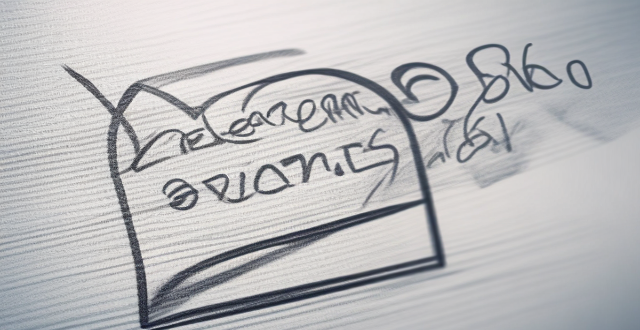
What are the best tips for navigating through a busy airport ?
The text offers several tips for navigating through a busy airport, including checking in online, packing light, arriving early, being prepared for security checks, familiarizing oneself with the airport layout, using technology, keeping essentials handy, and staying informed. These strategies aim to help travelers save time, reduce stress, and ensure a smoother journey through the airport.

What safety measures are taken during a rocket launch and how have they improved over time ?
Rocket launches are complex and dangerous events that require numerous safety measures to ensure the success of the mission and the well-being of all personnel involved. Over time, these safety measures have evolved and improved significantly due to advancements in technology, increased understanding of potential risks, and lessons learned from past incidents. Before a rocket is launched, several safety measures are taken to minimize risks, such as design reviews, quality assurance testing, personnel training, range safety, and weather checks. Once the rocket is launched, additional safety measures come into play, including telemetry tracking, flight termination systems, and emergency evacuation plans. After the rocket has successfully reached space, there are still safety considerations, such as debris tracking and environmental cleanup. Safety measures during rocket launches have improved significantly over time due to advancements in technology, increased understanding of risks, lessons learned from past incidents, and stricter regulations and standards developed by government agencies and industry organizations.

Can exercising too close to bedtime interfere with sleep ?
Exercising too close to bedtime can interfere with sleep due to factors like increased heart rate, elevated body temperature, release of stimulating hormones, activation of the nervous system, muscle soreness, and digestive activity. To avoid sleep interference, it's recommended to finish workouts at least 3 hours before bedtime, choose lighter exercises closer to bedtime, create a calming pre-sleep routine, and be mindful of post-exercise nutrition.